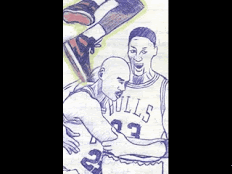
[INSTRUMENTAL:]
[CHANDIRU WHISPERS:]
Agasi, aga'bo, agasi!
Agasi, aga'bo!
[VERSE ONE:]
Ini ce ra, ale mi ra! Ico aco ku, aha!
Mi imu mavu, ife me i’da mini onyi, kiri kiri!
Ale eri saru, eri fe ma asi ni su, ‘ba ‘di, maye ‘do
Ale eri saru, eri fe ma asi ni su, ‘ba ‘di, maye ‘do
Ma ‘ye ngoni ya?
[CHORUS:]
Like a dream in my sleep, and
I know that you wanna be free
Mi imu mavu!
All I know in my heart is,
I just won’t say “Goodbye!”
Agasi. Aga'bo!
Oh oh, wowo! X3 Oh! (Aga'bo!) X2
[VERSE TWO:]
I’bi ma dri! Ma mi agi,
Itu ongo ma’be (ma’be)!
A’dule ife me i’da mini ayiko idri ni, baby!
A(du)sikunisi, ale mi-i saru!
Mi fe ma asi ni su, ‘ba ‘di, ma’ye ‘do!
Ale mi-i saru, mi fe ma dri ni ga, ‘ba ‘di, ma’ye ‘do!
Ma asi ni su.
[CHORUS:]
[HOOK:]
Mi mani, mani a’dule. Inini ku, baby!
‘Ba ngoki ongo leta dri-i, mi imu mapye, baby!
A(du)sikunisi, ale mi-i saru!
Mi fe ma asi ni su, ‘ba ‘di, maye ‘do!
Ale mi-i saru! Mi fe ma asi ni su, ‘ba ‘di, maye ‘do!
Maye, yeee, eh hey!
[CHORUS:]
[SPEAKING:]
Mi imu mavu!
All I know is, I just won’t say goodbye, Yeh, agasi. Oh, oh, oh!
No goodbye, eh!
No goodbye! (Agasi) No goodbye!
No goodbye! (Aga'bo) No goodbye!
I won't say 'Goodbye!' (Agasi) Oh oh!
Agasi, aga'bo! Oh, aha!
Huh X7
No goodbye!
[END]
When Jackie decided to do a song in Lugbara, a producer warned her that her idea was career suicide. However, today this song is so thrilling that people who don’t even understand her language sing along because of the catchy lyrics. Others gyrate to the melodic tunes. It plays on the world-class MTV Base plus regional EATV, Channel O en other broadcast stations. The video is shot in a predominantly black and brown colour mix and features JC plus two men dancing in a forest at night.
The song is basically about a girl's confessions to her lover who wants to quit their relationship. "Agasi" translated from Lugbara means "I have refused" (to say 'Goodbye!' to this relationship).
The first verse says: "You know I love you, don't fight! Come to me, let me show you good! I love him so much, he makes my heart pain. What will I do?"
The second verse says: "Hold my hand! I'm your friend. Dance with me! Alone, let me show you the joy of life! Because, I love you so much! You make my heart pain."
The hook says: "You are mine, mine alone. You don't know, baby. People have sung love songs. Come with me, baby! Because I love you so much! You make my heart pain."
Wow, now that's romantic! This song deserves an award!
Other Jackie songs with Lugbara lines include "Iringwa?" (Where is he?) about searching for your soulmate; "Were Were" (Kidogo Kidogo/ Small Small) ft. DYAN; "(Another Hannz Production) More Fire" ft. VARIOUS ARTISTS; "For All Time" ft. SAMMY (from Eritrea); "Gold Digger"; "Shamim"; "Don't Break My Heart (Remix)" ft. COCO FINGER; "Champion" en so forth...







